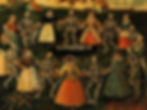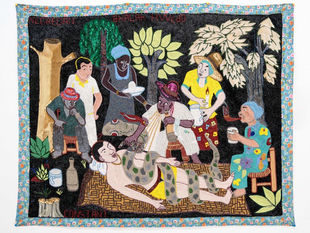
All Tattoos Are Temporary: Choosing Your Memento Mori Tattoo
0
22
0

Question: Are tattoos permanent?
Answer: Is anything?
If you are on the brink of getting your first tattoo, you might be anxious about it. “After all,” you think, “It’ll be there forever!” You want to be sure that the tattoo’s theme will be relevant till the day you die, that the linework on your flawless skin will remain eternally smooth as silk, that none of your thousands of future outfits will ever clash with the color scheme, and that you will never, ever have any regrets- or should I say, regerts- about your decision to get tattooed.
Once the decision is made and the ink’s been punched into your skin, though, the tattoo becomes like any scar or mole, albeit hopefully more aesthetically pleasing. It’s just there, hanging out as part of your body, for the rest of your life. You chose it the day you got tattooed, sure. But everything that happens to your skin after that also happens to your tattoo, and much of that, you don’t get to choose. Texas-sized mosquito bites, the brutal Austin summer sun, scrapes from bike rides and rock scrambles, and the natural process of aging are all part of life here, on earth as it is in Austin, and the tattoo is now along for that ride, blurring and fading and stretching and wrinkling with the rest of your skin as you live out the remainder of your years (click here for a dermatologist's take on that whole process.)
Also, as the tattoo blurs over time, your decision to get tattooed blurs together with the millions of other choices you have made, be they for good or ill; scores of life-altering decisions that may not have resulted in a picture on your skin, but nonetheless constitute the shape of your whole life. And you didn’t know how they were going to work out when you made them either.
The revelation of this lack of control you have over your tattoos and possibly your own fate may lead you to the other end of the tattoo concern spectrum, giddily and indiscriminately getting zapped with whatever cheap tattoo flash you can find, kind of like a toddler who gets their hands on their first sticker pack. You may find yourself grabbing other strangers waiting in line with you at the tattoo shop on Friday the 13th by the shoulders and cackling into their faces, “IT DOESN’T MATTER! IT DOESN’T MATTER!”
Does it, though? You will never know what your life would have been had you not gotten tattooed. Maybe you could have been a very successful tattoo-less baby, or a Sears catalogue model (do they still have those? And are the models still not tattooed?). Chances are, you will never even have a chance to see the bridges you burned by getting tattooed, as time only moves in one direction (actually, this has apparently been disproven). Unlike the main character in Everything, Everywhere, All At Once, you will never know the multitude of alternate lives you could have lived if you had not gotten tattooed.
There is one thing you do know, though.
Whether your skin stays as pristine as the first page of a fresh notebook, or is meticulously decorated from edge to edge with refined artistry, or is scrawled all over like a dive bar bathroom stall, your skin and all the tattoos on it are eventually going to be crumpled up and thrown into the trash can we call DEATH.

And we should remember that.
All tattoos are temporary.
And what better reminder of this fact than a memento mori tattoo?
The Latin phrase “Memento Mori”- “remember you must die”- goes back to Roman times. After coming back triumphant from battle, a conquering hero, while receiving the applause of the roaring crowd, would have a trusted servant called an Augira whisper the phrase in his ear.

The idea was for the hero to not get a big head and start thinking he was invincible. But as the concept of “memento mori” spread, it became evident that remembering the inevitability of one’s death means different things to different people, as neutral as the fact actually is.
For Christians, “memento mori” became a reminder that their actions during life would count in eternity, and could land them a permanent position in either heaven or hell. It could also be a caution against “vanity,” which didn’t just mean an obsession with one’s own appearance during that time. It meant that, being impermanent, all of this life is “in vain,” or meaningless. This led to a school of painting called Vanitas, depicting skulls, hourglasses, rotting fruit and other reminders of impermanence in a somberly realistic manner. “You are dust, and to dust you shall return” sums up this attitude.

For hedonists, however, memento mori had almost the opposite meaning: “Eat, drink, and be merry, for tomorrow, we die!” If nothing exists but the pleasures of life on earth, and if that could end at any moment, the phrase could be a reminder to live life to its fullest. It was the YOLO of those times.

For Stoics, memento mori was a reminder to be prepared for death at any moment, not because of what might await you in the afterlife, but what gives your life value. The inevitability of death, in this case, is incentive to get one’s priorities straight. Stoics past and present stress that one should cherish one’s loved ones, do what gives life meaning, and let the small inconveniences of life roll off one’s back because we never know when it could all come to an end. The continuation of “memento mori,” for Stoics, is “memento vivire”: remember, you must live!

The specter of the Grim Reaper is a personification of the memento mori theme. We never know when this figure- often seen holding an hourglass and a scythe to harvest our lives- is going to appear. He has his own mysterious reasons for cutting lives short or allowing them to drag on. And although he can at times be bargained with, when it is truly one’s time to die, the reaper can not be convinced otherwise.


Related to the Grim Reaper is the popular artistic motif of Death and The Maiden, depicting a skeleton in seductive flirtation, passionate embrace, or -ehrm- something less consensual with a beautiful young girl, showing both the ephemeral nature of the freshness of youth and the entanglement of death and sex.


Another popular death related artistic motif was the Danse Macabre, depicting skeletons dancing onto the lives of kings, popes, beggars, fools, and young and old alike to whisk them away, showing that no one is to be spared.

Reminders of the inevitability of death appear on tombstones, in paintings and prints, on coins, amulets, and jewelry, and in the practice of keeping actual skulls, still common in cultures around the world. But seeing that death is as attached to us as our own shadow, a memento mori that can be removed from the body doesn’t quite drive the point home.
Therefore, I argue that a memento mori tattoo is the most perfect reminder of the inevitability of one’s own death.
But which type of memento mori tattoo should you get?
Lettering

If you like lettering tattoos, particularly in the stately Romanesque style of serif capitals, and you want to lend a classical flare to your tattoos, consider getting the words “Memento Mori” as a tattoo. The vibe is that of the servant whispering into the conquering hero’s ear, and calls back the original stoicism of the message. So for history buffs, the classically educated, and Stoic philosopher types, this may be the way to go.
This does add some complications to placing the tattoo, because if you want the words to be a reminder to yourself, they would need to be tattooed upside down for you to read them in real life, or backwards if you want to read them in the mirror. In the mind of much of the tattoo community, this is a no-no, as most tattoos will be seen by others more often than you see them, and it could be disconcerting for others to see the tattoo reversed. (Personally, I regret my upside down forearm skull tattoo and wish I had chosen to have it upright to others. )
There is also the fact that not everyone will know what “memento mori” means, and you may find yourself explaining it to others more often than you would like. Fielding questions and comments from the general public is part of being a tattooed person, and it’s a good idea to consider what the least informed, most intrusive people will have to say about any tattoo before you get it.
Having memento mori tattooed somewhere that is not visible to the public could minimize this problem, but in that case, you will need to consider how your partner or partners will react to a reminder of death being part of all your intimate moments. I’m not saying it will necessarily be a bad thing! Sexuality and death are inextricably linked, so maybe it will deepen the experience.
Skull

The skull tattoo is the most common symbol of death while also being the most casual. It’s October, and there are skulls everywhere, but I don’t know if they are making people any more aware of their own mortality- although, arguably, that’s the whole reason for the season. Skull tattoos are popularly thought of as more rebellious and defiant than as memento mori symbols. So while the rest of the world is thinking you’re a tough guy metalhead or edgy goth with your skull tattoo, you could be quietly meditating on your own mortality. Hidden in plain sight!
Accessories can also add a specificity to the skull tattoo. For example, a skull tattoo wearing a motorcycle helmet could be perfect for a biker who knows the risks of riding a motorcycle but prefers to enhance their sense of imminent death through the thrill of risk. A skull tattoo with a rose in its mouth goes back to the timeless theme of romance and death, as in Death and the Maiden. And a skull tattoo with a cowboy hat, well… that’s just death in Texas, y’all.
Skull tattoos also can be hilarious, depending on their accessories and the style they’re drawn in. This can emphasize the “life is but a joke” aspect of remembering one’s own death. I’ll go into this further in the skeleton tattoo section.
Skeleton
Depicting an entire skeleton rather than just a skull offers a lot more in terms of emotional expression in the memento mori tattoo! Your skeleton could be dancing, slipping on a banana, making whoopee with another skeleton; all jumping off from the basic meaning of memento mori and into the “so what” of it all.

A skeleton memento mori tattoo also offers the chance to dress it up! Your skeleton might be wearing the tattered shroud of the Grim Reaper, or the frilly Madonna-like attire of Santa Muerte. They might be wearing a crown and a robe, as in the Medieval tradition of the Danse Macabre, emphasizing that all must die, no matter how important they seem in life. They might be dressed as a Catrina, a character frequently depicted in Mexican Day of the Dead art (if you’re not Mexican, please consider whether it’s appropriate for you to carry imagery on your body from a tradition you don’t participate in, and your reasons for doing so. Again, others are going to see and ask questions about your tattoos. ) A similar example would be a skeleton tattoo dressed in a tophat, coat and tails like Baron Samedi, a spirit seen in both Haitian Vodou and New Orleans Voodoo, depicted on everything from beer to donuts. The skeleton tattoo could be wearing the period or ethnic attire of your ancestors… the sky’s the limit! A good tattoo artist will be able to take your idea and run with it, so don’t worry about being able to draw your skeleton tattoo yourself.

Hourglass
An hourglass was one of the main symbols in Vanitas paintings of the 17th century, emphasizing that our time is always running out. Therefore, they are a natural choice for a memento mori tattoo. As a tattoo artist and a spiritual worker who deals with the power of images, however, I would not recommend an hourglass tattoo to someone who is stressed out by deadlines. There are interpretations of “memento mori” that don’t have this urgent implication and simply emphasize the impermanence of life.

Wilted flowers and decaying fruit, vegetables, meat, and fish were also commonly featured in Vanitas paintings, though I have only included the flowers as a tattoo option here because I can’t quite visualize how to make a nice tattoo of the other things. The flowers add the dimension of aging and diminishing of freshness over the course of life, encouraging us to appreciate the beauty of impermanence. If you love floral tattoos, you might want to incorporate some wilting flowers or dropping petals in your next botanical piece, as well as buds and the mature fruits or seed pods of whatever flower you are depicting, showing the full cycle of life.

Tombstone

A tombstone can be a great choice for a memento mori tattoo, as it can be rendered in whatever style you wish and offers a shape in which text can be placed. The tombstone already says we’re talking about death. Then, whatever you put on it can express your take on it! It’s like designing your own tombstone. Want some ideas for what to put on it?
“Here For A Good Time, Not For A Long Time”
“Out To Lunch” (thanks Rachel)
And my favorite…
“All Tattoos Are Temporary”
Want to book a Memento Mori tattoo at The Serpent Tattoo and Occult Shop? Reach out today!





